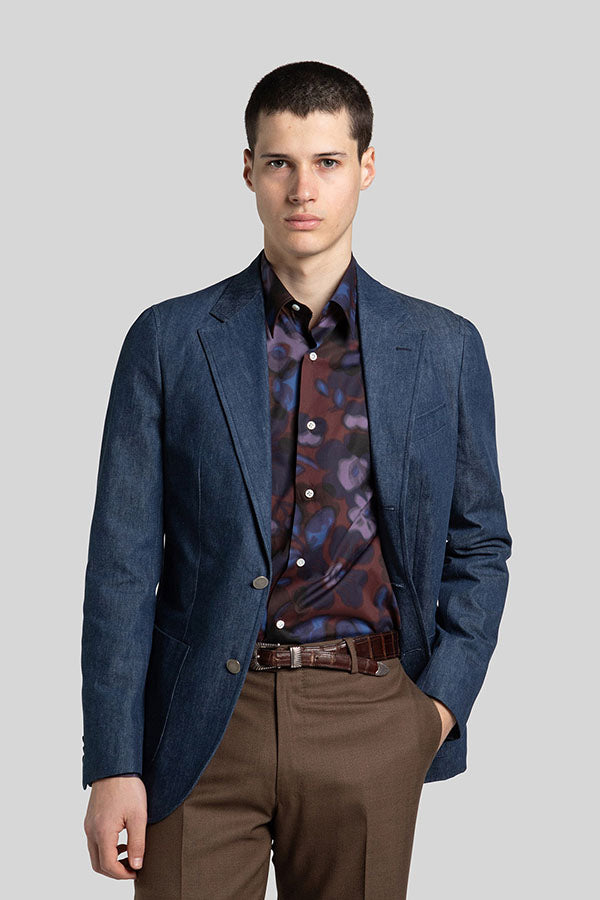Your Cart is Empty
HANDMADE IN NAPOLI | FREE SHIPPING AND RETURNS (ON ORDERS ABOVE 300,00€)
HANDMADE IN NAPOLI | FREE SHIPPING AND RETURNS (ON ORDERS ABOVE 300,00€)

Dress Code Business Casual: What is it?
March 04, 2021 3 min read
The Business Casual Dress Code

Since the world is constantly changing, so are the jobs and the ways we work. With them the dress codes are undergoing some changes as well. If an invitation reads “Dress code: business casual” surely a cotton blazer with an elegant shirt and no tie is a good starting point. But what is the casual dress code? It is a style of clothing that does not have a precise definition and for this reason we will try to give you some main tips that you can follow, so as not to make mistakes in the dress code.
The history of casual dress code
The history of business casual wear can be linked to the concept of "casual Fridays", which reportedly originated in Hawaii in the 1960s with the idea of "Aloha Fridays", where men were encouraged to wear Hawaiian shirts to work at the end of the week. In the early 90s the idea arrived in the United States in the form of "casual Fridays", especially thanks to the acquisition by Levi's of the brand Dockers, which specializes in weekend clothing. The pivot of this transition were khaki trousers, which represented a revolution in the United States, in the late 1990s and early 2000s. The khakis fortunately ended their honeymoon in the business casual world, but they were the beginning of something new.
Types of casual dress codes
Returning to the present day let’s see in detail the fundamental elements that must never be missing in the dress code clothing. Firstly, the blazer. It must be navy, tailored and adapted to your physical conformation. It is a classic single-breasted blazer with peak lapels, whose fabric should be chosen according to the season and the occasion.
So a tweed or flannel are the way to go during the winter season. For the warmer seasons, a cotton or linen blazer will do just fine, using slightly lighter shades of blue. Also sports coats are ok for business causal dress codes. We invite you to take a look at our collection of made in Napoli jackets by Eduardo de Simone, a symbol of excellence and handmade clothing
And shirt and trousers for a smart casual dress code?
Under your jacket you can wear a buttoned shirtlike a crispy white or light blue poplin. The collar can be either French or Italian. As for the colors, stripes are very well accepted in these circumstances. Hand-made Trousers can be coloured too, as long as their central crease does not break. A pair of medium weight cotton chinos would just do the trick.
The final touch: the accessories of a semi formal dress code
As for shoes, we need to focus on two fundamental elements: quality and style. We recommend that you wear modern dress shoes like moccasins or monk straps, in leather and colors such as chocolate or black. If a business casual dress code is required, we would refrain from Oxfords, since they are too elegant and better for more formal dress codes. At last but not least, remember that in the smart casual dress codethe tie should not be worn.
The clothing described still now can also be adopted for cocktail dress codes, so after office hours you can relax with friends for aperitif time, with your business casual dress code.
Also in Blog

How To Style Pleated Trousers
February 07, 2022 2 min read
They are three kinds of pleat:forward (pointing towards the fly, typical of English tailoring),reverse(folded towards the pockets, favored by the Italians) and “a forchetta” which has one side forward and the other reverse. Forward pleats are neater, reverse pleats create a looser shape.
Read More
What's The Difference Between a Blazer and a Sport Coat?
January 31, 2022 3 min read
Real connoisseurs know the difference between a sports coat and a blazer. Read the article to discover why these two gaments are not the same thing.
Read MoreSubscribe
Sign up to get the latest on sales, new releases and more …

Subscribe to our Newsletter and get 10% off your first order
Be the first to know about our promotions, events and the launch of new products




